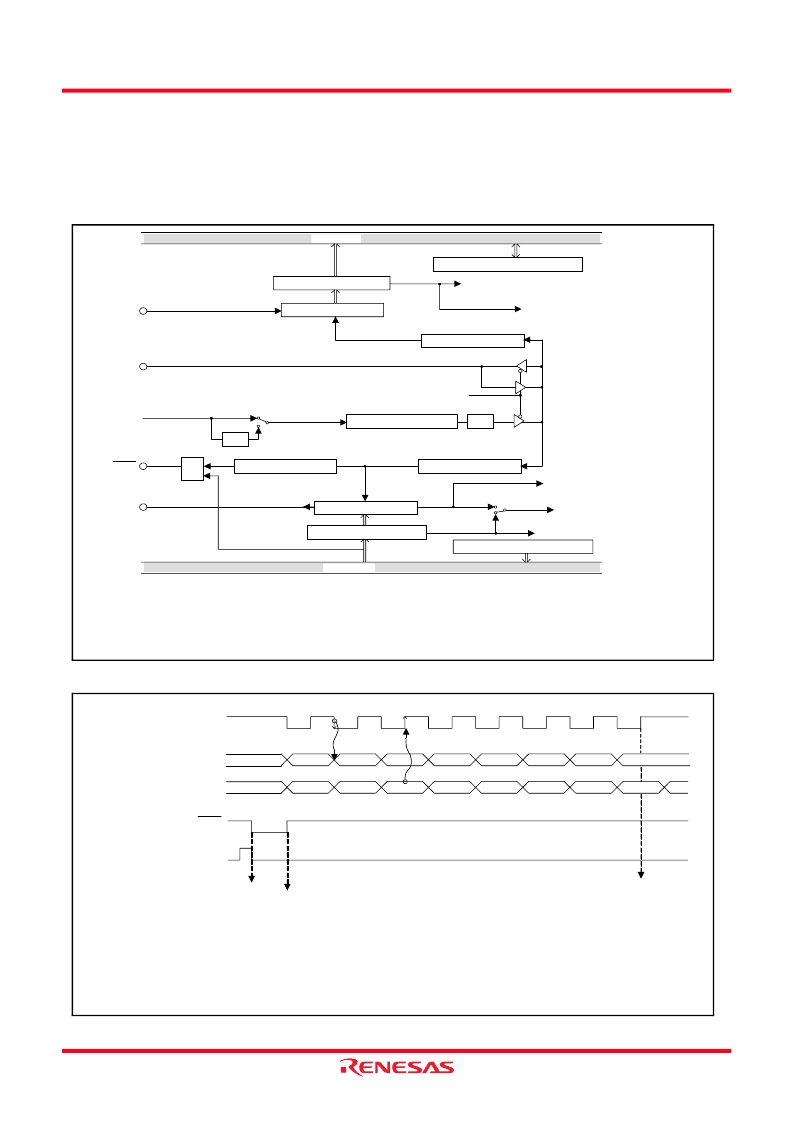- 您現(xiàn)在的位置:買賣IC網(wǎng) > PDF目錄358635 > 38D5 (Renesas Technology Corp.) SINGLE-CHIP 8-BIT CMOS MICROCOMPUTER PDF資料下載
參數(shù)資料
| 型號: | 38D5 |
| 廠商: | Renesas Technology Corp. |
| 英文描述: | SINGLE-CHIP 8-BIT CMOS MICROCOMPUTER |
| 中文描述: | 單芯片8位CMOS微機 |
| 文件頁數(shù): | 43/141頁 |
| 文件大?。?/td> | 2027K |
| 代理商: | 38D5 |
第1頁第2頁第3頁第4頁第5頁第6頁第7頁第8頁第9頁第10頁第11頁第12頁第13頁第14頁第15頁第16頁第17頁第18頁第19頁第20頁第21頁第22頁第23頁第24頁第25頁第26頁第27頁第28頁第29頁第30頁第31頁第32頁第33頁第34頁第35頁第36頁第37頁第38頁第39頁第40頁第41頁第42頁當前第43頁第44頁第45頁第46頁第47頁第48頁第49頁第50頁第51頁第52頁第53頁第54頁第55頁第56頁第57頁第58頁第59頁第60頁第61頁第62頁第63頁第64頁第65頁第66頁第67頁第68頁第69頁第70頁第71頁第72頁第73頁第74頁第75頁第76頁第77頁第78頁第79頁第80頁第81頁第82頁第83頁第84頁第85頁第86頁第87頁第88頁第89頁第90頁第91頁第92頁第93頁第94頁第95頁第96頁第97頁第98頁第99頁第100頁第101頁第102頁第103頁第104頁第105頁第106頁第107頁第108頁第109頁第110頁第111頁第112頁第113頁第114頁第115頁第116頁第117頁第118頁第119頁第120頁第121頁第122頁第123頁第124頁第125頁第126頁第127頁第128頁第129頁第130頁第131頁第132頁第133頁第134頁第135頁第136頁第137頁第138頁第139頁第140頁第141頁

Rev.3.01
REJ03B0158-0301
Aug 08, 2007
Page 43 of 134
38D5 Group
SERIAL INTERFACE
SERIAL I/O1
Serial I/O1 can be used as either clock synchronous or
asynchronous (UART) serial I/O. A dedicated timer is also
provided for baud rate generation.
(1) Clock Synchronous Serial I/O Mode
Clock synchronous serial I/O1 mode can be selected by setting
the serial I/O mode selection bit of the serial I/O1 control register
to “1”.
For clock synchronous serial I/O1, the transmitter and the
receiver must use the same clock. If an internal clock is used,
transfer is started by a write signal to the TB/RB.
Fig. 33 Block diagram of clock synchronous serial I/O1
Fig. 34 Operation of clock synchronous serial I/O1 function
1/4
1/4
F/F
Receive buffer register
Receive shift register
Receive buffer full flag (RBF)
Receive interrupt request (RI)
Clock control circuit
Shift clock
Serial I/O1 synchronous
clock selection bit
Frequency division ratio 1/(n+1)
Baud rate generator
Address 001C
16
BRG count source selection bit
Clock control circuit
Falling-edge detector
Transmit buffer register
Data bus
Shift clock
Transmit shift completion flag (TSC)
Transmit buffer empty flag (TBE)
Serial I/O1 status register
Transmit interrupt request (TI)
Transmit interrupt source selection bit
Data bus
Transmit shift register
Serial I/O1 control register
Address 0018
16
Address 0018
16
Address 0019
16
Address 001A
16
P4
0
/R
X
D
P4
2
/S
CLK1
P4
3
/S
RDY1
P4
1
/T
X
D
φ
SOURCE
Note1:
φ
SOURCE indicates the followings:
X
IN
input in the frequency/2, 4, or 8 mode
On-chip oscillator divided by 4 in the on-chip oscillator mode
Sub-clock in the low-speed mode
(1)
D
7
D
0
D
1
D
2
D
3
D
4
D
5
D
6
D
0
D
1
D
2
D
3
D
4
D
5
D
6
RBF = 1
TSC = 1
TBE = 0
TBE = 1
TSC = 0
Transfer shift clock
(1/2 to 1/2048 of the internal
clock, or an external clock)
Serial output TxD
Serial input RxD
Write pulse to receive/transmit
buffer register
Overrun error (OE)
detection
Notes 1
: As the transmit interrupt (TI) source, which can be selected, either when the transmit buffer has emptied (TBE = 1) or
after the transmit shift operation has ended (TSC = 1), by setting the transmit interrupt source selection bit (TIC) of the
serial I/O1 control register.
2
: If data is written to the transmit buffer register when TSC=0, the transmit clock is generated continuously and serial data
is output continuously from the TxD pin.
3
: The receive interrupt (RI) is set when the receive buffer full flag (RBF) becomes “1” .
Receive enable signal S
RDY
D
7
相關PDF資料 |
PDF描述 |
|---|---|
| 38F1222 | 300mA LDO Linear Regulators with Internal Microprocessor Reset Circuit |
| TA5M | STECKER DIN MINI 5POL |
| 70B5031 | KUPPLUNG DIN MINI 5POL |
| 39-26-3050 | 300mA LDO Linear Regulators with Internal Microprocessor Reset Circuit |
| 390KD05JX | 11 to 460 Volts Varistor 0.7 to 29 Joule |
相關代理商/技術參數(shù) |
參數(shù)描述 |
|---|---|
| 38D5_07 | 制造商:RENESAS 制造商全稱:Renesas Technology Corp 功能描述:Standard Characteristics Example |
| 38D5_08 | 制造商:RENESAS 制造商全稱:Renesas Technology Corp 功能描述:SINGLE-CHIP 8-BIT CMOS MICROCOMPUTER |
| 38D511G015FE6AD | 制造商:Sprague/Vishay 功能描述:AL015X751 |
| 38D5-FMV | 制造商:RENESAS 制造商全稱:Renesas Technology Corp 功能描述:Standard Characteristics (Flash Memory Version) |
| 38DDP11B11M1QT | 功能描述:SWITCH PUSH DPDT,O-N-O,N,SL,LF , 制造商:grayhill inc. 系列:* 零件狀態(tài):在售 標準包裝:1 |
發(fā)布緊急采購,3分鐘左右您將得到回復。